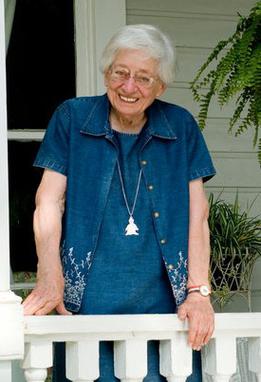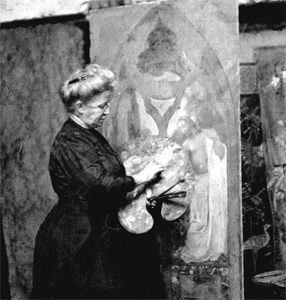Related Research Articles

Interstate 20 (I‑20) is a major east–west Interstate Highway in the Southern United States. I-20 runs 1,539 miles (2,477 km) beginning at an interchange with I-10 in Scroggins Draw, Texas, and ending at an interchange with I-95 in Florence, South Carolina. Between Texas and South Carolina, I-20 runs through northern Louisiana, Mississippi, Alabama, and Georgia. The major cities that I-20 connects to include Dallas, Texas; Shreveport, Louisiana; Jackson, Mississippi; Birmingham, Alabama; Atlanta, Georgia; and Columbia, South Carolina.

Tuscaloosa is a city in and the seat of Tuscaloosa County in west-central Alabama, United States, on the Black Warrior River where the Gulf Coastal and Piedmont plains meet. Alabama's fifth-largest city, it had an estimated population of 102,432 in 2022. It was known as Tuskaloosa until the early 20th century. It is also known as "the Druid City" because of the numerous water oaks planted in its downtown streets since the 1840s.

Meridian is the seventh largest city in the U.S. state of Mississippi, with a population of 41,148 at the 2010 census and an estimated population in 2018 of 36,347. It is the county seat of Lauderdale County and the principal city of the Meridian, Mississippi Micropolitan Statistical Area. Along major highways, the city is 93 mi (150 km) east of Jackson, Mississippi; 154 mi (248 km) southwest of Birmingham, Alabama; 202 mi (325 km) northeast of New Orleans, Louisiana; and 231 mi (372 km) southeast of Memphis, Tennessee.

U.S. Route 80 or U.S. Highway 80 (US 80) is a major east–west United States Numbered Highway in the Southern United States, much of which was once part of the early auto trail known as the Dixie Overland Highway. As the "0" in the route number indicates, it was originally a cross-country route, from the Pacific Ocean to the Atlantic Ocean. Its original western terminus was at Historic US 101 in San Diego, California. However, the entire segment west of Dallas, Texas, has been decommissioned in favor of various Interstate Highways and state highways. Currently, the highway's western terminus is at an interchange with Interstate 30 (I-30) on the Dallas–Mesquite, Texas city line. Its eastern terminus is in Tybee Island, Georgia near the Atlantic Ocean. Between Jonesville, Texas and Kewanee, Mississippi, US 80 runs parallel to or concurrently with Interstate 20. It also currently runs through Dallas, Texas; Shreveport, Louisiana; Jackson, Mississippi; Montgomery, Alabama; Columbus, Georgia; Macon, Georgia; and Savannah, Georgia.

Alabama State University is a public historically black university in Montgomery, Alabama. Founded in 1867, ASU is a member-school of the Thurgood Marshall College Fund.

The Alabama State Capitol, listed on the National Register of Historic Places as the First Confederate Capitol, is the state capitol building for Alabama. Located on Capitol Hill, originally Goat Hill, in Montgomery, it was declared a National Historic Landmark on December 19, 1960. Unlike every other state capitol, the Alabama Legislature does not meet there, but at the Alabama State House. The Capitol has the governor's office and otherwise functions as a museum.

Kathryn Tucker Windham was an American storyteller, author, photographer, folklorist, and journalist. She was born in Selma, Alabama, and grew up in nearby Thomasville.

WAKA is a television station licensed to Selma, Alabama, United States, serving as the CBS affiliate for the Montgomery area. It is owned by Bahakel Communications alongside Tuskegee-licensed CW+ affiliate WBMM ; Bahakel also provides certain services to ABC affiliate WNCF under a shared services agreement (SSA) with SagamoreHill Broadcasting. The stations share studios on Harrison Road in north Montgomery, while WAKA's transmitter is located in Gordonville, Alabama.
The 1904 Alabama Crimson White football team represented the University of Alabama in the 1904 Southern Intercollegiate Athletic Association football season. The team was led by head coach W. A. Blount, in his second season, and played their home games at The Quad in Tuscaloosa and at West End Park in Birmingham, Alabama. In what was the twelfth season of Alabama football, the team finished with a record of seven wins and three losses.
The MidSouth Rail Corporation is a railroad line operated by Kansas City Southern Railway (KCS) as a result of the January 1, 1994, acquisition; KCS began operating over MidSouth's line on January 11, 1994. The line ran from Shreveport, Louisiana, going east across Louisiana, and across the state of Mississippi, running through the cities of Vicksburg, Jackson, Meridian, and Artesia, Mississippi, then across the Alabama state line to Tuscaloosa, and finally into Birmingham. Midsouth had two other branches, with one to Counce, Tennessee, and a disconnected line from Gulfport to Hattiesburg, Mississippi. Total mileage was 1,212 miles (1,951 km) worth of mostly former Illinois Central Gulf's east-west Shreveport - Meridian main line.

The Alabama Great Southern Railroad is a railroad in the U.S. states of Alabama, Georgia, Louisiana, Mississippi, and Tennessee. It is an operating subsidiary of the Norfolk Southern Corporation (NS), running southwest from Chattanooga to New Orleans through Birmingham and Meridian. The AGS also owns about a 30% interest in the Kansas City Southern-controlled Meridian-Shreveport Meridian Speedway.
The 1980 Alabama Crimson Tide football team represented the University of Alabama in the 1980 NCAA Division I-A football season. It was the Crimson Tide's 86th overall and 47th season as a member of the Southeastern Conference (SEC). The team was led by head coach Bear Bryant, in his 23rd year, and played their home games at Bryant–Denny Stadium in Tuscaloosa and Legion Field in Birmingham, Alabama. They finished season with ten wins and two losses and with a victory over Baylor in the Cotton Bowl.
The 1921 Alabama Crimson Tide football team represented the University of Alabama in the 1921 college football season. It was the Crimson Tide's 28th overall and 25th season as a member of the Southern Intercollegiate Athletic Association (SIAA). The team was led by head coach Xen C. Scott, in his third year, and played their home games at Denny Field in Tuscaloosa and at Rickwood Field in Birmingham, Alabama. They finished the season with a record of five wins, four losses and two ties.
The 1928 Alabama Crimson Tide football team represented the University of Alabama in the 1928 college football season. It was the Crimson Tide's 35th overall and 7th season as a member of the Southern Conference (SoCon). The team was led by head coach Wallace Wade, in his sixth year, and played their home games at Denny Field in Tuscaloosa, at Legion Field in Birmingham and at the Cramton Bowl in Montgomery, Alabama. They finished the season with a record of six wins and three losses.

Clara Minter Parrish was an American artist from Alabama. Although she produced a large amount of work in a wide array of media, she is best known for her paintings and stained glass window designs. She was inducted into the Alabama Women's Hall of Fame in 1983.
The history of the 1954 to 1968 American civil rights movement has been depicted and documented in film, song, theater, television, and the visual arts. These presentations add to and maintain cultural awareness and understanding of the goals, tactics, and accomplishments of the people who organized and participated in this nonviolent movement.
The 1945 Mississippi State Maroons football team represented Mississippi State College during the 1945 college football season.

The Dixie Overland Highway was an auto trail across the southern United States. It was conceived in July 1914 by the Automobile Club of Savannah, which envisioned a practical all-year driving route from Georgia to California. It was originally developed as a cross-country route, from the Pacific Ocean to the Atlantic Ocean making history as the first ever ocean to ocean highway route. In 1925, the federal Joint Board on Interstate Highways created U.S. Route 80, largely following the route of the Dixie Overland Highway.
Malcolm Norwood was an American painter, ceramist and educator. He taught at Delta State University from 1962 to 1990, and he was the recipient of the Governor's Award for Excellence in the Arts in 1991.
Wayne Sides is an American photographer, artist and educator that is best known for his documentary and conceptual art categories of photography and mixed-media art.
References
- 1 2 "Artist and Long-time UA Professor Emeritus Alvin Sella Dies". News Center. The University of Alabama. 12 April 2013. Retrieved February 29, 2020.
- 1 2 3 4 McDavid, O.C. (November 3, 1974). "O.C. McDavid's Gallery Talk: Alvin Sella, Adrian Kalanczhy, Ann Jones, Dottie Pagano, Colony, La Font Worshop". The Clarion-Ledger. Jackson, Mississippi. p. 55. Retrieved February 29, 2020– via Newspapers.com.
- ↑ "Alvin Sella Will Conduct Art Workshop". The Times. Shreveport, Louisiana. June 23, 1970. p. 13. Retrieved February 29, 2020– via Newspapers.com.
- 1 2 Hayes Moore, Deborah (May 24, 2009). "'Celebration of the Arts' honors eight". The Montgomery Advertiser. Montgomery, Alabama. Retrieved February 29, 2020.
- ↑ McDonald, Margaret (June 25, 1964). "Judging From Paintings--Alvin Sella Must Be Many-Faceted Person". The Shreveport Journal. Shreveport, Louisiana. p. 34. Retrieved February 29, 2020– via Newspapers.com.
- ↑ "Alabama State Council on the Arts honors Windham". The Selma Times-Journal. Selma, Alabama. May 27, 2009. p. 1. Retrieved February 29, 2020– via Newspapers.com.